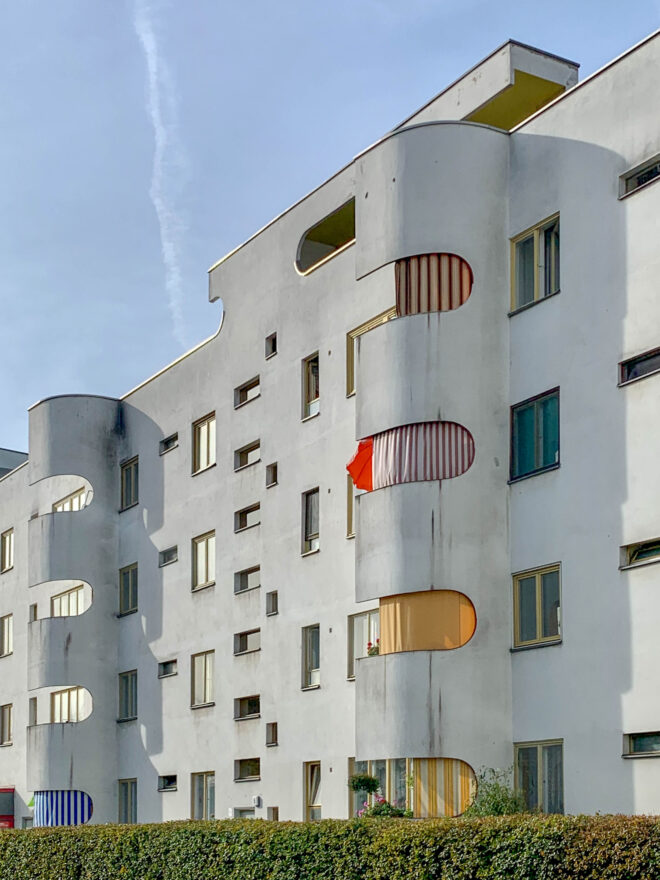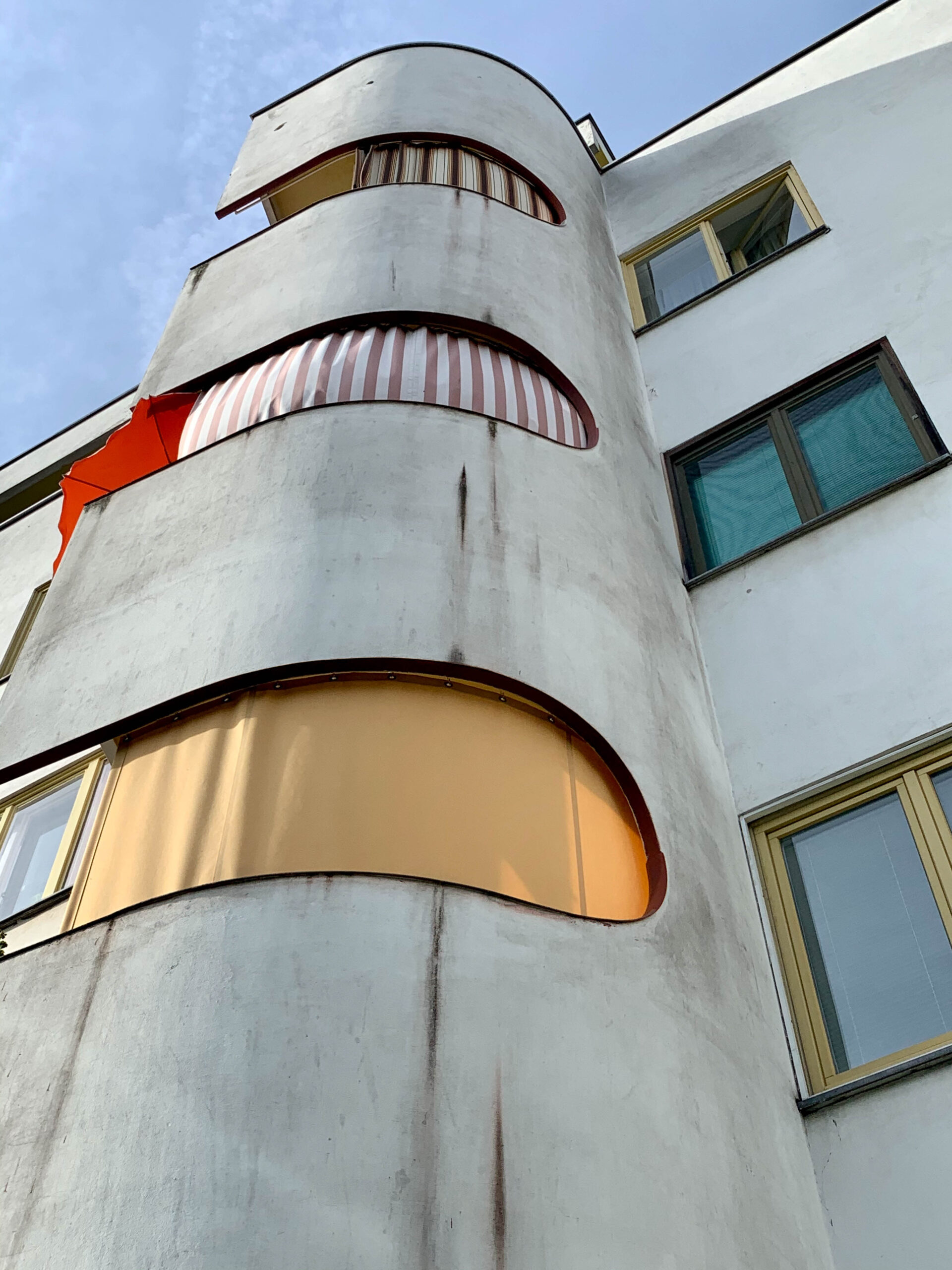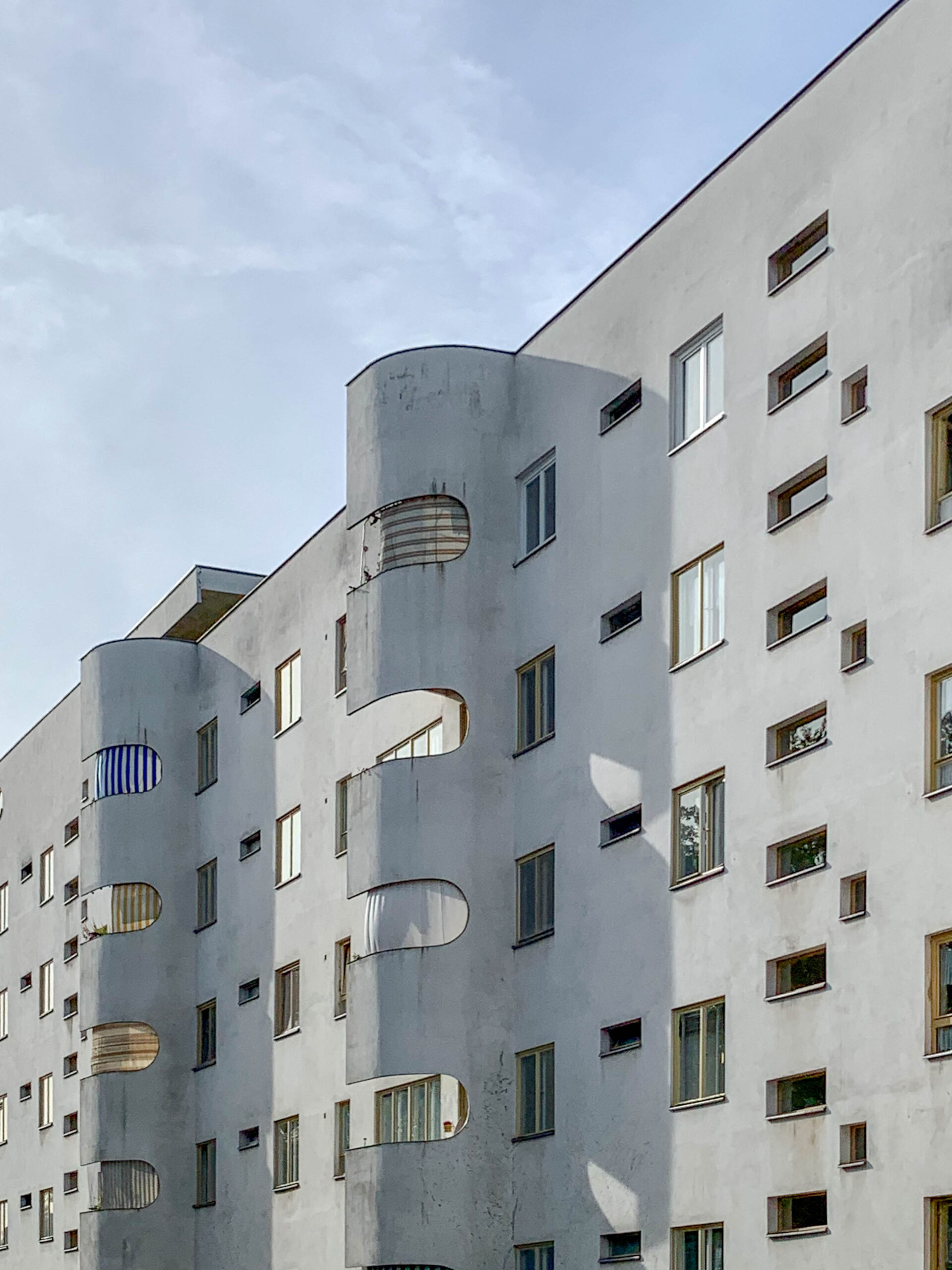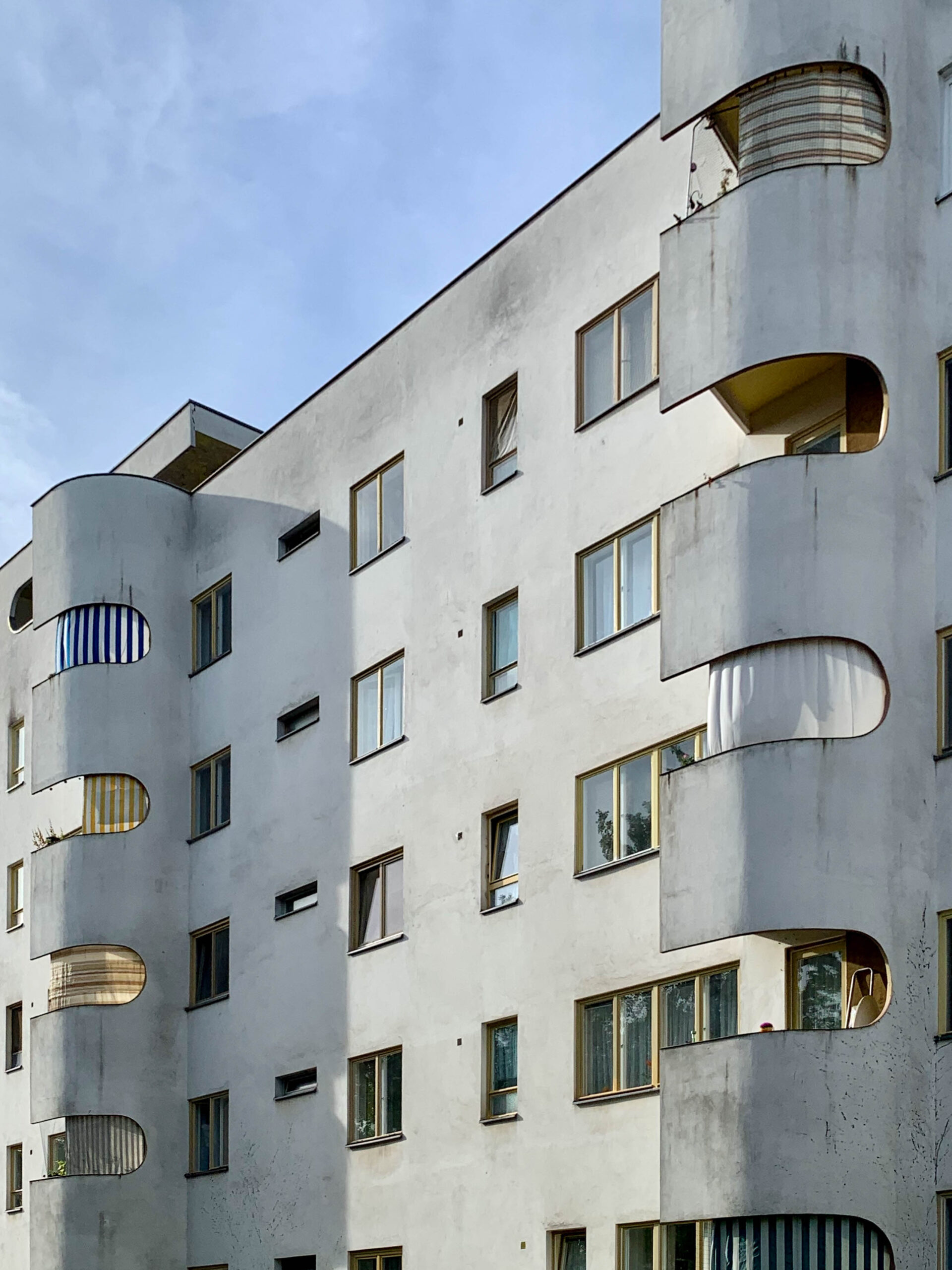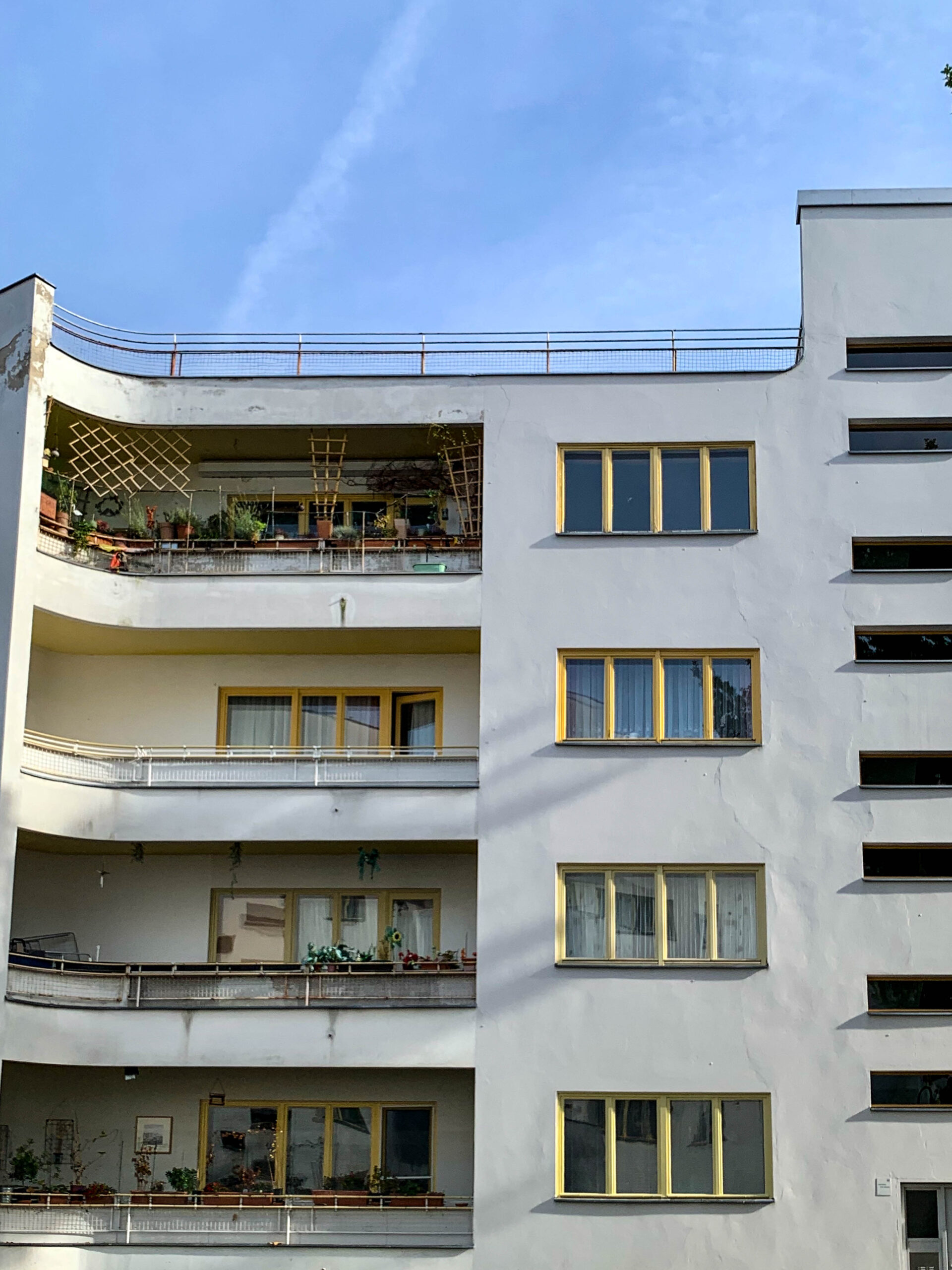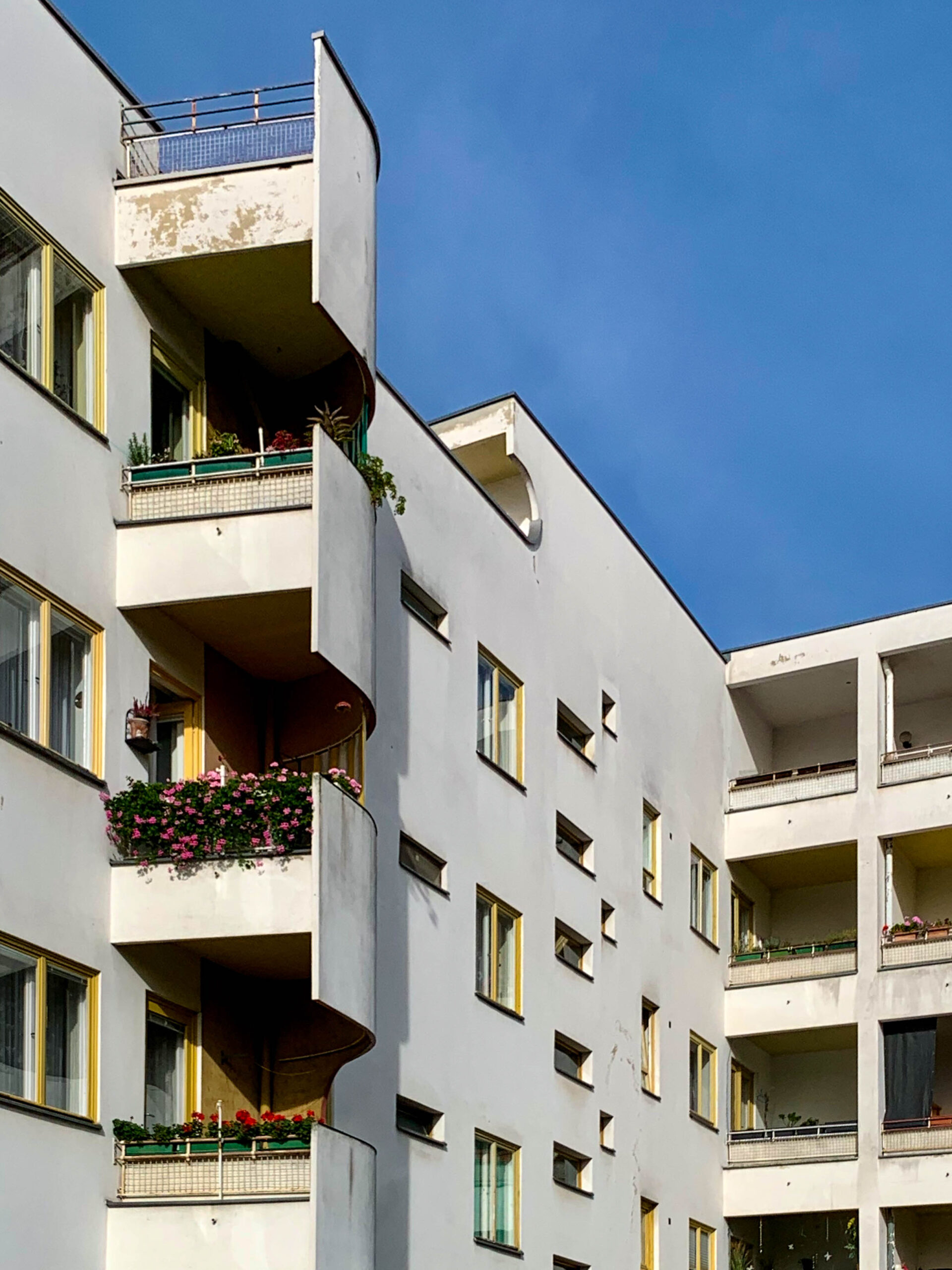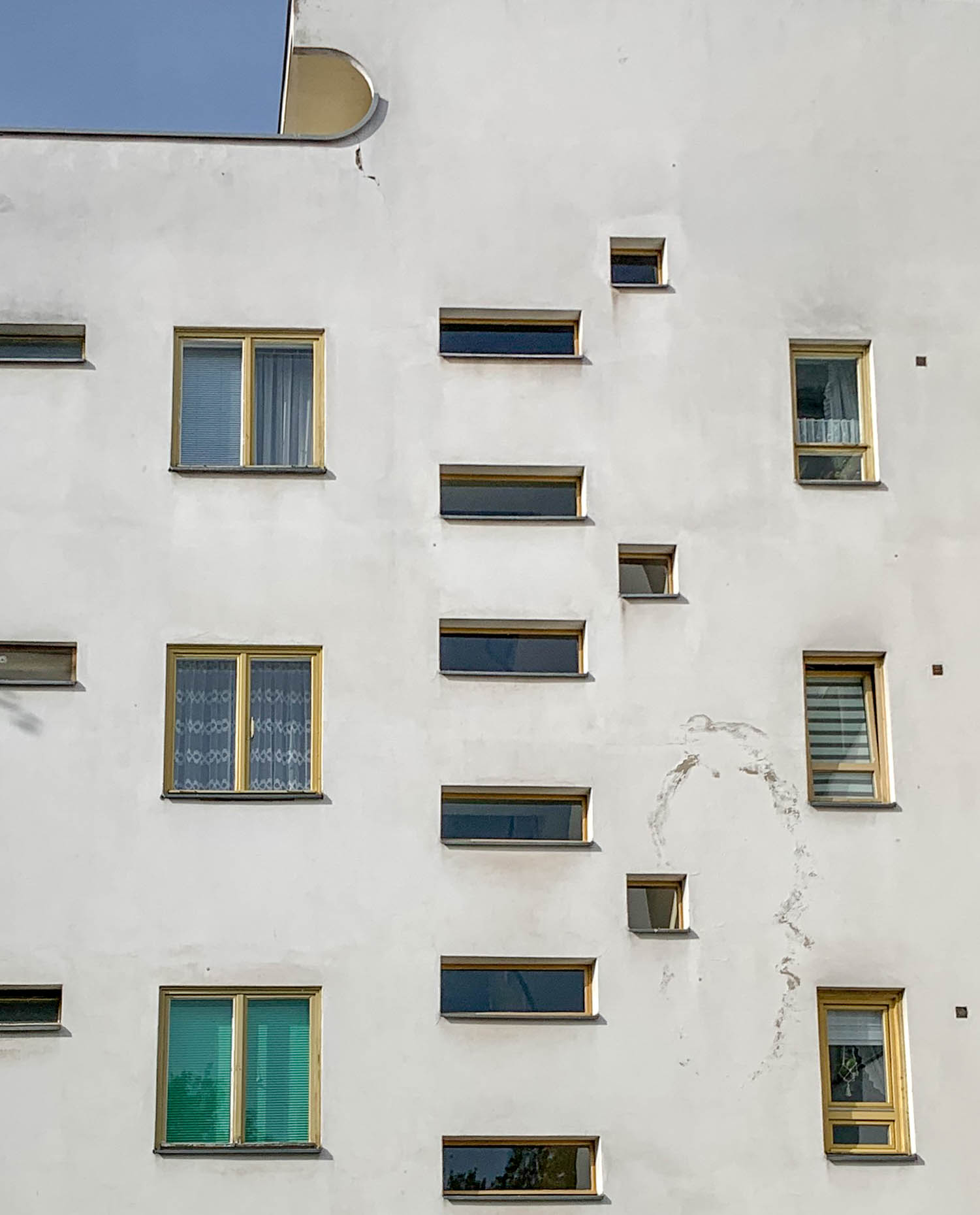1929 – 1930
Architect: Hans Scharoun
Jungfernheideweg 1-15, 4-14, Mäckeritzstraße 6-22, Berlin, Germany
Siemensstadt Housing Estate
The Großsiedlung Siemensstadt, also called Ringsiedlung, established a new type of housing estate consisting only of multi-storey apartment buildings (in contrast to the large Berlin housing estates Britz and Zehlendorf).
For the design of the housing estate, Martin Wagner, the city’s building councillor, appointed the members of the progressive architects’ association Der Ring as well as the architects Fred Forbát and Paul Rudolf Henning.
The total of 1.370 apartments and 17 stores, built in three construction phases, were primarily intended to provide new living space for the employees of the Siemens company and to ensure daily local supply.
The average apartment size was 54 square meters.
Development
The development plan by Hans Scharoun points the way to the international modern urban design of the loosened up, structured and greened city, whose core is a generous green area designed by the garden architect Leberecht Migge.
Most of the rows of the large housing estate are arranged in a north-south direction to ensure optimal lighting of the apartments.
The architects typified windows, doors and floor plans of the apartments, most of which have two to two-and-a-half-room units, in the individual rows.
Heating System
The Siemensstadt housing estate was one of the first in Berlin to be equipped with its own district heating system.
Originally planned at a different location by Fred Forbat, the building was then placed in the middle of the housing estate equidistant from the eastern and western rows for technical reasons, in order to keep the supply routes for heating and hot water to a minimum.
With the central heating system installed, a better use of the living space was also to be achieved, as up to 5 square meters of living space could be gained in each of the small apartments by eliminating the tiled stoves that had been common until then.
Although all the houses in Siemensstadt had been equipped with their own laundry and drying rooms, the heating plant designed by Otto Bartning in conjunction with engineer Max Mengeringhausen contained a central settlement laundry.
After the settlement was connected to the Berlin district heating network, the district’s own heating plant was shut down and the distinctive chimney was demolished.
Panzerkreuzer
The staggered balconies and command bridge-like roof gradations gave this residential complex in Berlin-Siemensstadt the name Panzerkreuzer (Battleship).
Scharoun himself lived from 1930 to 1960 in one of the apartments at Jungfernheideweg 4 (fourth floor on the right).

